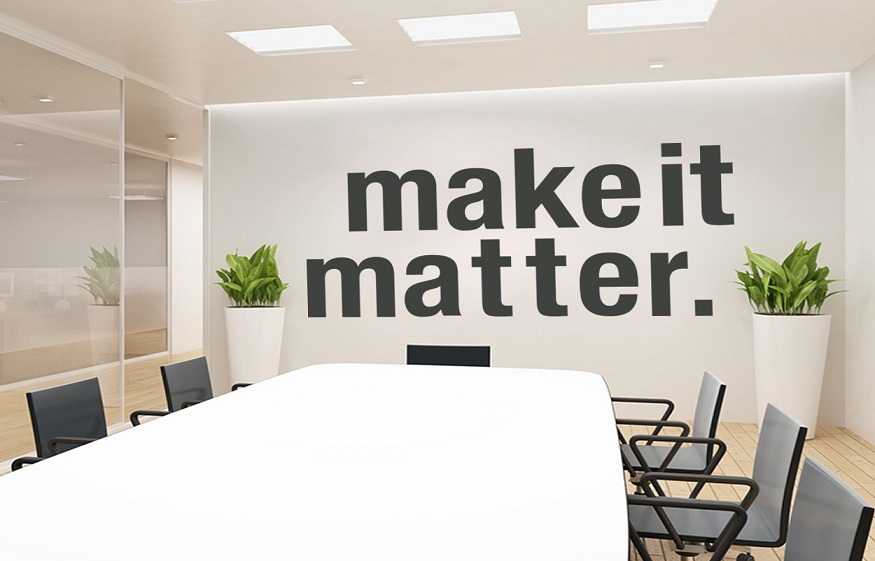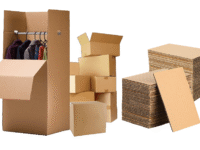Interior Signs: A comprehensive guide

Interior signs are an important aspect of any business, as they help to guide customers and employees through a building, promote products and services, and provide important information. In this blog post, we will discuss the different types of interior signs, their purpose, and how to choose the best ones for your business.
How to design an interior sign
Designing an effective interior sign involves a number of considerations, including the purpose of the sign, the audience, and the overall look and feel of the space. Here are some steps to follow when designing an interior sign:
- Determine the purpose of the sign: Consider the specific purpose of the sign, such as providing directions, promoting products or services, or providing important information. This will help to guide the design process and ensure that the sign is effective in achieving its intended purpose.
- Consider the audience: Think about who will be using the sign and how they will be interacting with it. This will help to determine the appropriate size, placement, and language of the sign.
- Choose an appropriate style: Consider the overall look and feel of the space and choose a style that is consistent with the branding and aesthetic of the business.
- Select an appropriate material: Choose a material that is durable, easy to maintain, and appropriate for the location and environment in which the sign will be used.
- Choose an appropriate font: Select a font that is easy to read and appropriate for the purpose of the sign. Avoid using too many different fonts, as this can make the sign look cluttered and confusing.
- Use appropriate colors: Choose colors that are easy to read and appropriate for the purpose of the sign. Consider the background color and lighting conditions when selecting colors.
- Keep it simple: Use clear and concise language, and avoid using too much text. Use bullet points or numbered lists to organize information, and consider using graphics or images to convey information.
By following these steps, you can design an effective interior sign that is easy to read, easy to understand, and consistent with the overall look and feel of your business.
We highly recommend hiring a professional sign making company to design & manufacture your interior sign. Signmakers in Los Angeles have been making custom signs since 1993.
Wayfinding Signs
Wayfinding signs are designed to help people navigate through a building or facility. These signs can include directional arrows, floor numbers, room numbers, and even maps. Wayfinding signs should be easy to read and understand, and should be placed in strategic locations to ensure that people can easily find their way around the building.
Information Signs
Information signs provide important details about a business or facility. These signs can include things like hours of operation, policies, emergency procedures, and other important information. Information signs should be placed in prominent locations, and should be easy to read and understand.
Branding Signs
Branding signs are designed to promote a business’s brand and identity. These signs can include logos, slogans, and other branding elements, and can be used to create a cohesive and consistent look and feel throughout a facility. Branding signs should be placed in high-traffic areas, and should be consistent with the overall branding of the business.
Safety Signs
Safety signs are designed to alert people to potential hazards or dangers in a facility. These signs can include things like warning signs, fire exits, and emergency evacuation routes. Safety signs should be placed in strategic locations, and should be easy to read and understand in the event of an emergency.
When choosing interior signs for your business, it’s important to consider your needs and the overall look and feel of your facility. Make sure to choose signs that are easy to read and understand, and that are consistent with your branding and the overall aesthetic of your business. Additionally, consider the materials and durability of the signs, as well as the installation process and any ongoing maintenance that may be required.
Overall, interior signs are an important aspect of any business, and can help to improve the customer experience, promote products and services, and provide important information. By choosing the right signs for your business, you can help to create a cohesive and professional look and feel, and ensure that your customers and employees can easily navigate and find what they need.
Best materials for interior signs
There are a variety of materials that can be used for interior signs, and the best material for your business will depend on your specific needs and the environment in which the signs will be used. Some common materials for interior signs include:
- Acrylic: Acrylic is a popular choice for interior signs because it is lightweight, durable, and easy to work with. Acrylic signs can be laser cut or engraved, and can be produced in a variety of colors, including clear, frosted, and opaque.
- Aluminum: Aluminum is a strong and durable material that is often used for interior signs. It is resistant to corrosion and weathering, and can be printed or engraved with a variety of colors and designs.
- Foam board: Foam board signs are a lightweight and affordable option for interior signs. They are made of a foam core with paper or plastic facings, and can be cut into a variety of shapes and sizes.
- Wood: Wood signs can add a natural, warm, and classic look to an interior space. Wood signs can be painted, stained, or carved, and can be used for a variety of applications, including wayfinding, branding, and information.
- Glass: Glass signs can add a modern and sophisticated look to an interior space. Glass signs can be printed or etched with a variety of designs and colors, and can be mounted on a variety of materials, including wood, metal, or acrylic.
When choosing the material for your interior signs, consider the location and environment in which the signs will be used, as well as the desired look and feel. Also consider the durability and maintenance requirements of the material, as well as any special considerations, such as fire safety or accessibility.
Interior sign statistics
There are a variety of statistics related to interior signs and their impact on businesses. Some relevant statistics include:
- According to a study by the Signage Foundation, effective signs can increase sales by up to 20%.
- A survey by the International Sign Association found that 70% of customers enter a store because of its signs.
- A study by the University of Cincinnati found that well-designed wayfinding signs can reduce the time it takes for people to navigate through a building by up to 44%.
- A survey by the Environmental Graphic Design Association found that 86% of customers said that good wayfinding signs are important to their overall shopping experience.
- A study by the University of Reading found that effective signs can improve customer satisfaction by up to 50%.
- A survey by the Signage Foundation found that 63% of customers said that the quality of a business’s signs reflects the quality of its products and services.
These statistics highlight the importance of interior signs in businesses, and demonstrate the positive impact that effective signs can have on sales, customer satisfaction, and overall shopping experience.





